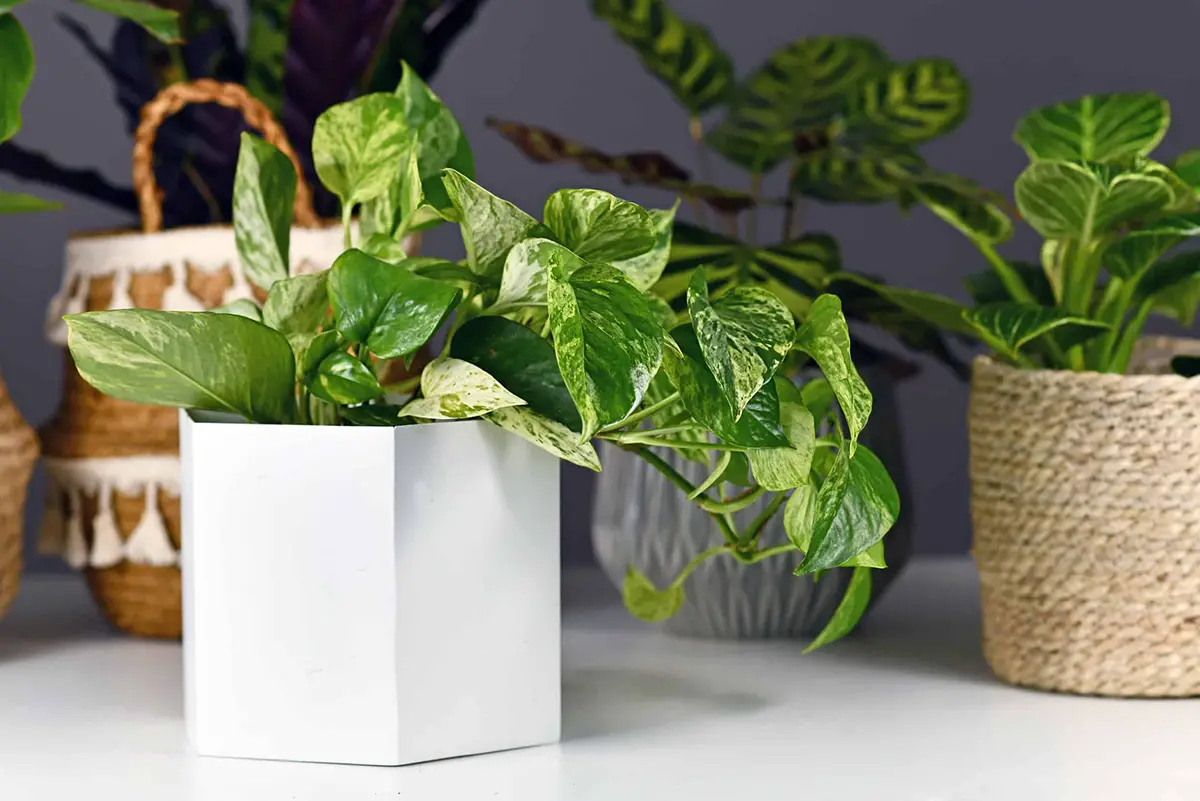You’ve just brought home a vibrant pothos plant, eager to see it thrive in your living space. But as days go by, you find yourself unsure about when to water it. Too much, and you risk root rot; too little, and the leaves start to droop. This common dilemma can be easily managed with the right knowledge.
By reading this post, you’ll learn exactly how often to water your pothos grown indoors, ensuring it stays lush and healthy.
Table of Contents
Understanding Pothos Watering Needs
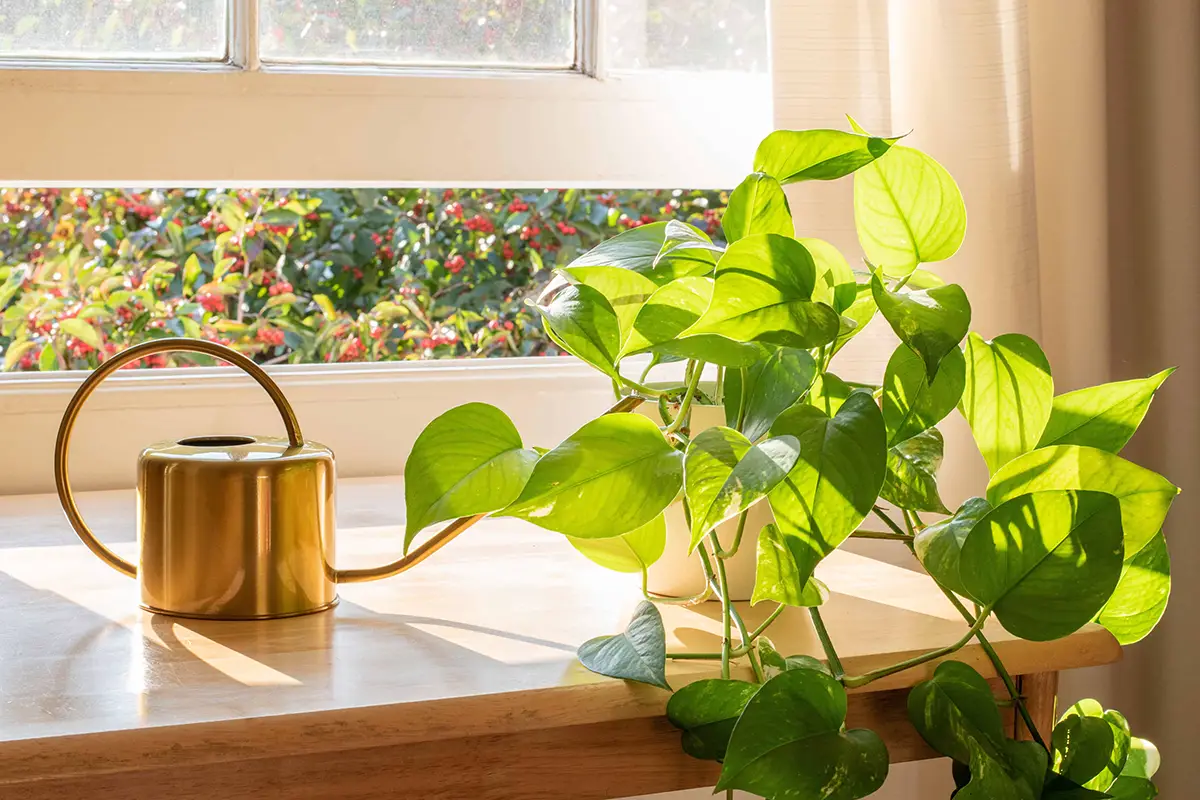
Pothos is a hardy and easy-to-grow houseplant that enjoys soil that dries out a bit between waterings. Your main focus should be on monitoring the moisture level of the soil. To do this, you can use your finger to check the top inch or two of soil – if it’s dry, it’s time to water your pothos.
Keep in mind that indoor environments can vary, and factors such as temperature, humidity, and light conditions can play a role in how often your pothos needs water. During winter, when the temperature drops, you will typically water your pothos less frequently. Alternatively, during warmer months or in a well-lit area, you might find your pothos needing water more often.
One thing to avoid is overwatering, which can lead to root rot and yellowing leaves. Make sure to plant your pothos in a pot with sufficient drainage to prevent waterlogged soil. Remember, consistency is key – aim to water your pothos with the same amount of water each time, allowing the soil to dry out between waterings.
How Often and How Much To Water Pothos
Water your Pothos every 1-2 weeks. This can vary depending on the plant’s size & environment. Factors such as light, temperature, and humidity levels affect the watering frequency.
Water the plant thoroughly until you see water draining out of the bottom of the pot. This ensures the roots get enough moisture.
Check Soil Moisture
For indoor pothos, the key is to let the soil dry out between waterings. You can determine this by inserting your finger about an inch into the soil. If the soil feels dry, it’s time to water your pothos.
Light
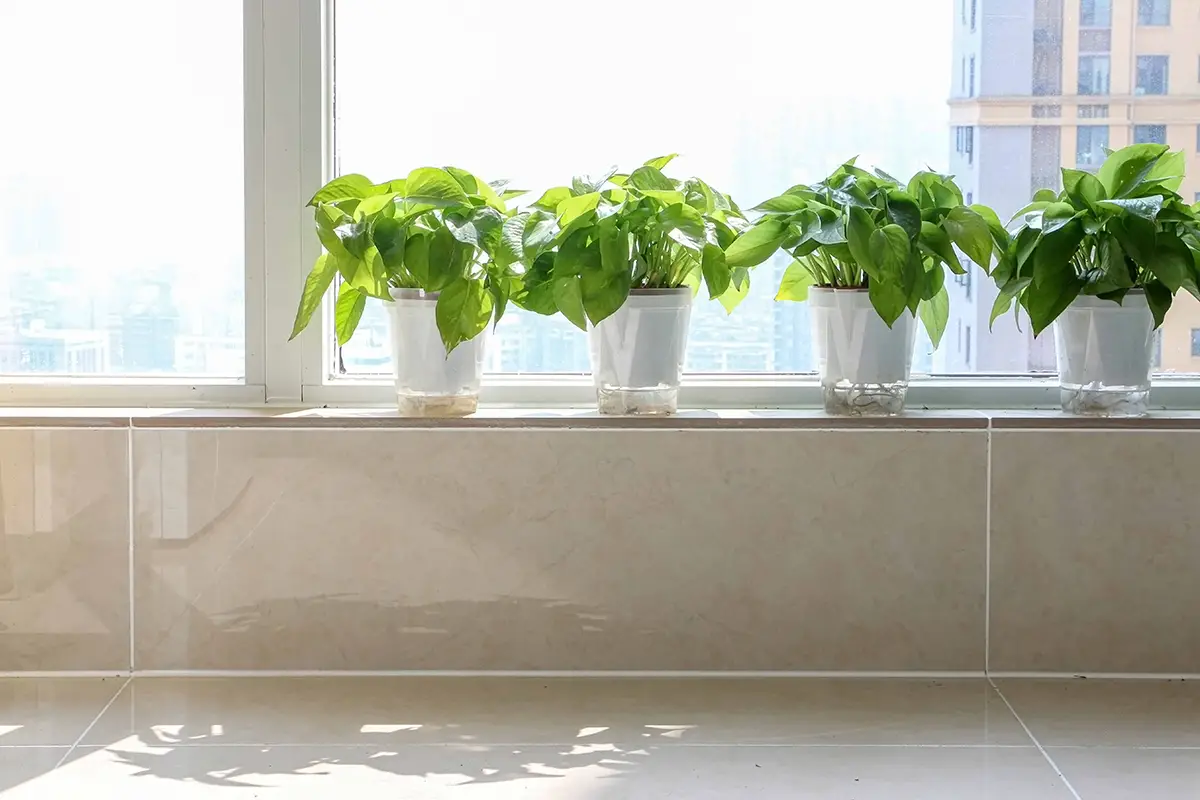
Pothos plants require relatively low light to thrive indoors. However, the amount of light received can impact the frequency of watering. If your pothos is in a brighter area, it may require more frequent watering compared to one in a lower-light area.
Size and Type of Pot
The pot size and material can affect how much and how often you should water your pothos. Smaller pots will require more frequent watering, while larger pots allow for more soil and moisture retention. Well-drained potting soil is essential for pothos health, as well as pots made of porous materials like clay or terracotta, which promote better air circulation.
Temperature and Humidity

Pothos plants are tropical and enjoy higher humidity levels. However, in low-humidity environments, your pothos may require more frequent watering. Similarly, higher temperatures can lead to faster evaporation of water, increasing the watering frequency. In such cases, you may need to adjust your watering schedule accordingly.
Observe Plant Health
Lastly, always pay attention to the health of your pothos plant. Yellowing leaves are often a sign of overwatering, while drooping or wilting indicates the plant needs more water. Adjust your watering practices based on your pothos’ appearance and health, maintaining a balance to ensure optimal growth and overall vitality.
How to Water Pothos
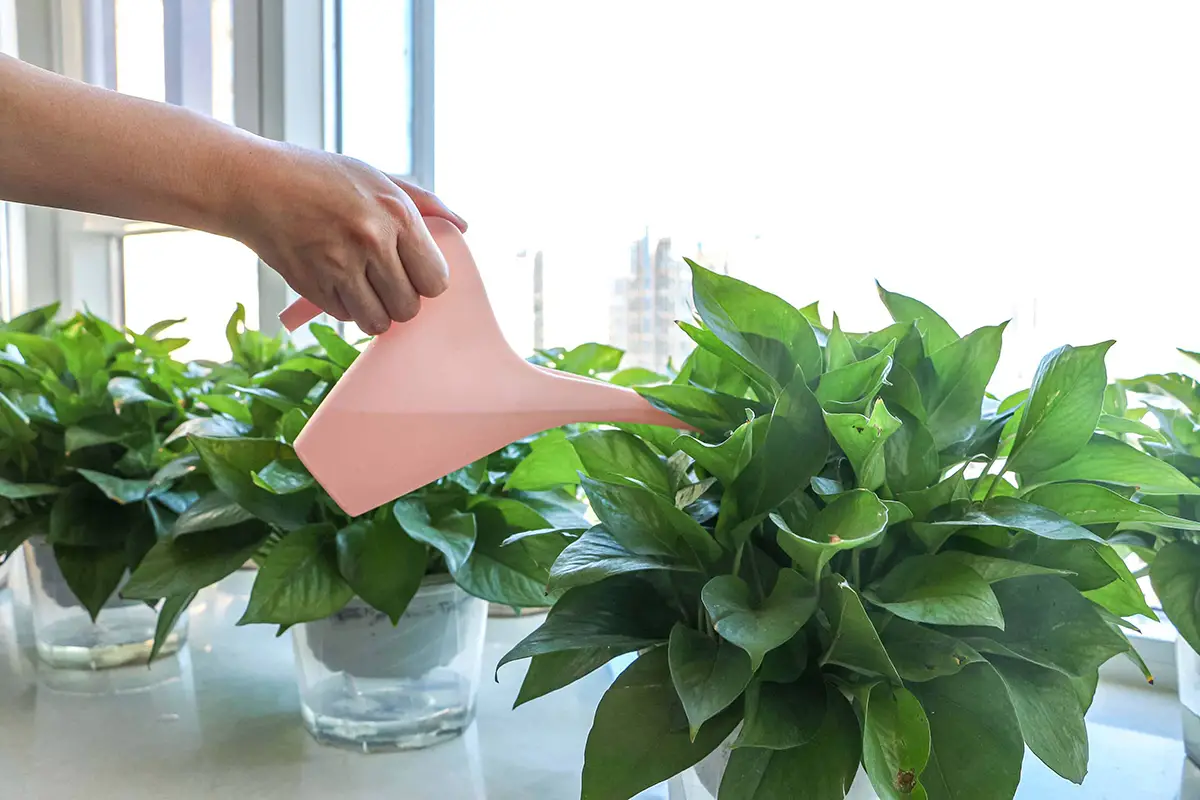
Start by watering your Pothos thoroughly and allowing the soil to dry out before the next watering session. Continuously damp soil may lead to root rot, which is detrimental to your plant. A sign of excessive dampness is the appearance of black spots on the leaves. Remember that Pothos prefers consistency, so develop a regular watering schedule.
The amount of water your Pothos needs might vary depending on environmental factors. During warmer months, you should increase the frequency of watering your plant as the soil dries out faster. Conversely, in colder months, the watering frequency decreases due to lower evaporation rates.
Common Mistakes to Avoid
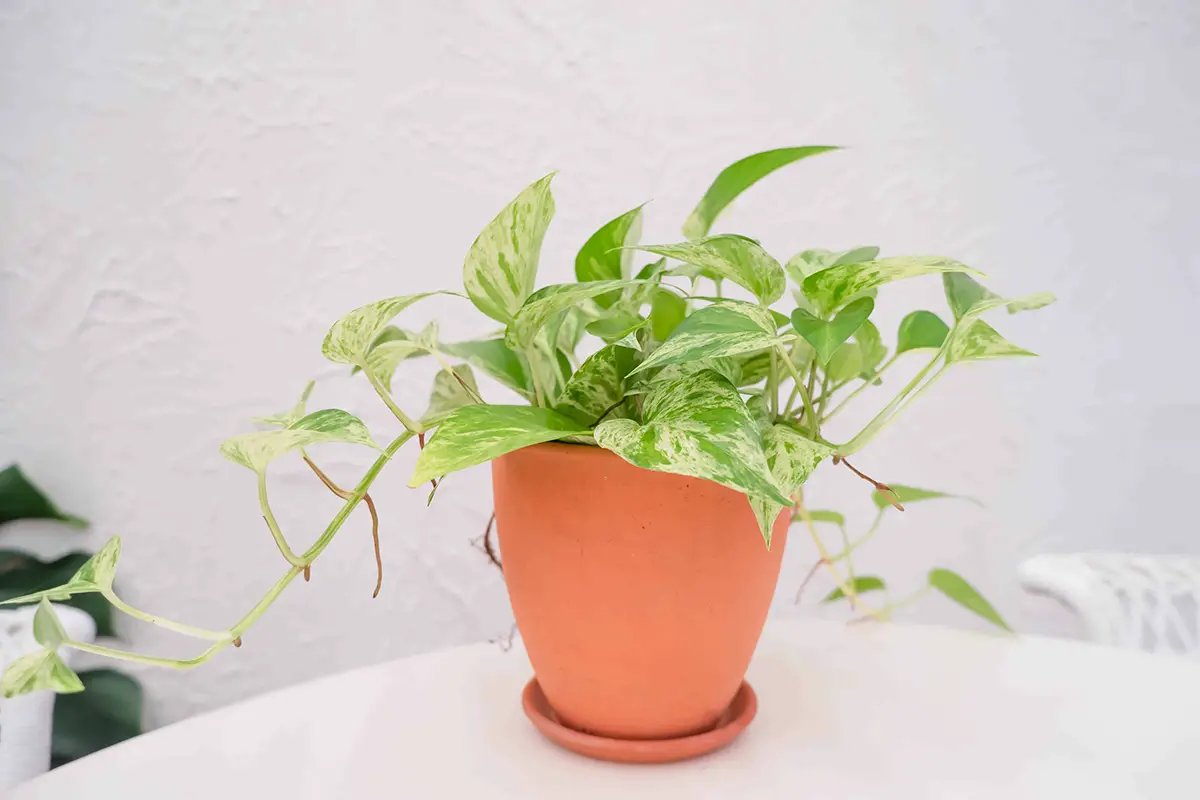
Overwatering
One of the most common mistakes people make when caring for their indoor pothos plants is overwatering them. Pothos plants don’t need to be watered too frequently, and constantly damp soil can lead to root rot. To avoid this issue, be sure to let the soil dry out between waterings. If you notice black spots on the leaves, it’s a sign the soil has been kept too wet.
Underwatering
Underwatering is another mistake you should avoid. While pothos plants are quite hardy and can tolerate low water levels, they still require proper hydration to thrive. If the leaves become wilted or yellow, it may be due to underwatering. To prevent this, ensure you’re watering your pothos plant adequately without overdoing it.
Ignoring Environmental Factors
Lastly, don’t ignore the environmental factors that can impact your pothos plant’s growth. These plants prefer bright, diffuse light. Ensure that you place them near a window or a shaded area indoors. Also, make sure they’re in well-drained potting soil to prevent waterlogging or root rot issues.
Seasonal Watering
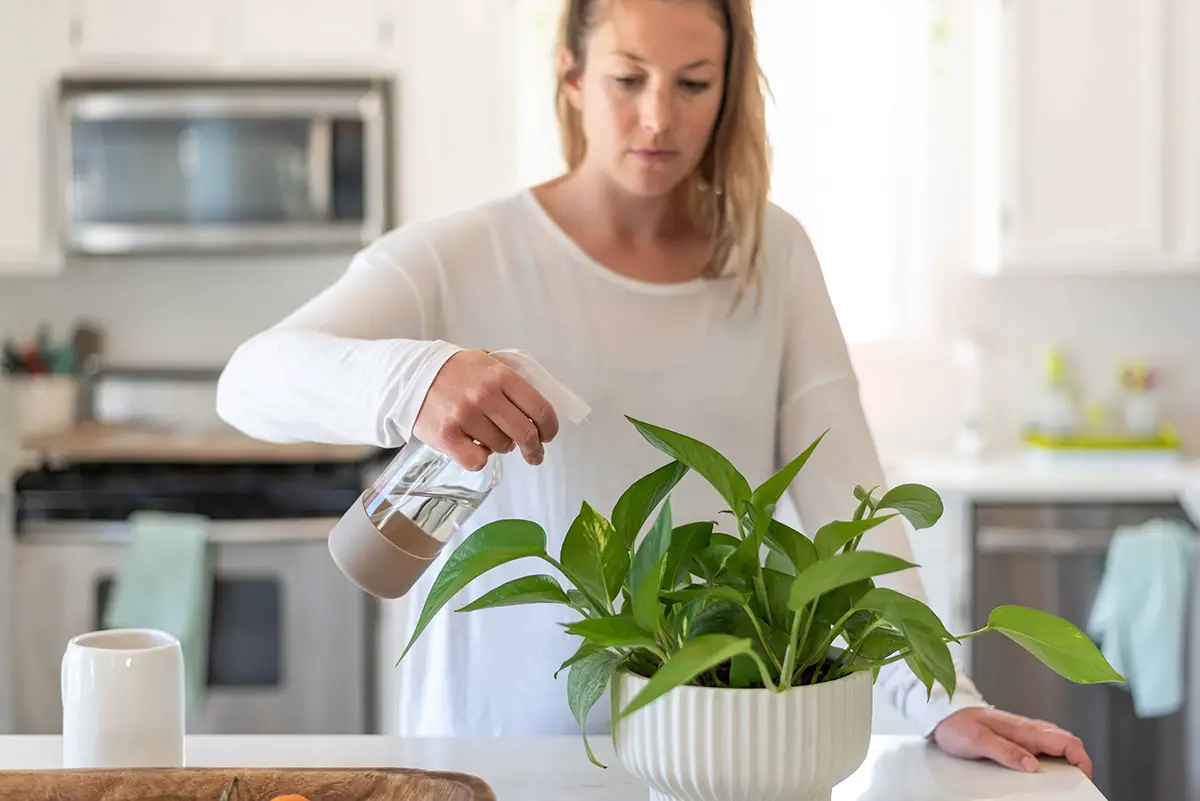
Summer Care
During the summer, your indoor pothos typically need more frequent watering. The increased heat and sunlight can cause the soil to dry out quicker than in other seasons. Make sure to check the moisture level of the soil at least once a week. In general, it is best to water your pothos when the top inch of soil feels dry.
Winter Care
In the winter months, pothos tend to require less frequent watering. The lower light levels and cooler temperatures cause the plant’s growth to slow down. Consequently, the soil retains moisture for longer periods. It is advisable to reduce the frequency of watering during this season. Check the soil’s moisture level every 10 to 14 days and water when the top inch feels dry.
Signs of Proper Hydration
Leaf Appearance
When watering your indoor pothos plant correctly, you will notice that the leaves are vibrant and strong. They should appear firm, with a healthy shade of green, and smooth to the touch. If the leaves become yellow, it could be a sign of over-watering, while wilted or brown leaves can signify a lack of water.
Growth Patterns
A well-hydrated pothos will display consistent growth. You can expect the plant’s vine to extend, and new leaves will sprout regularly. In a suitable environment, pothos can grow quickly, so providing the right amount of water is crucial to allow its growth potential.
Pothos Varietal Differences and Watering
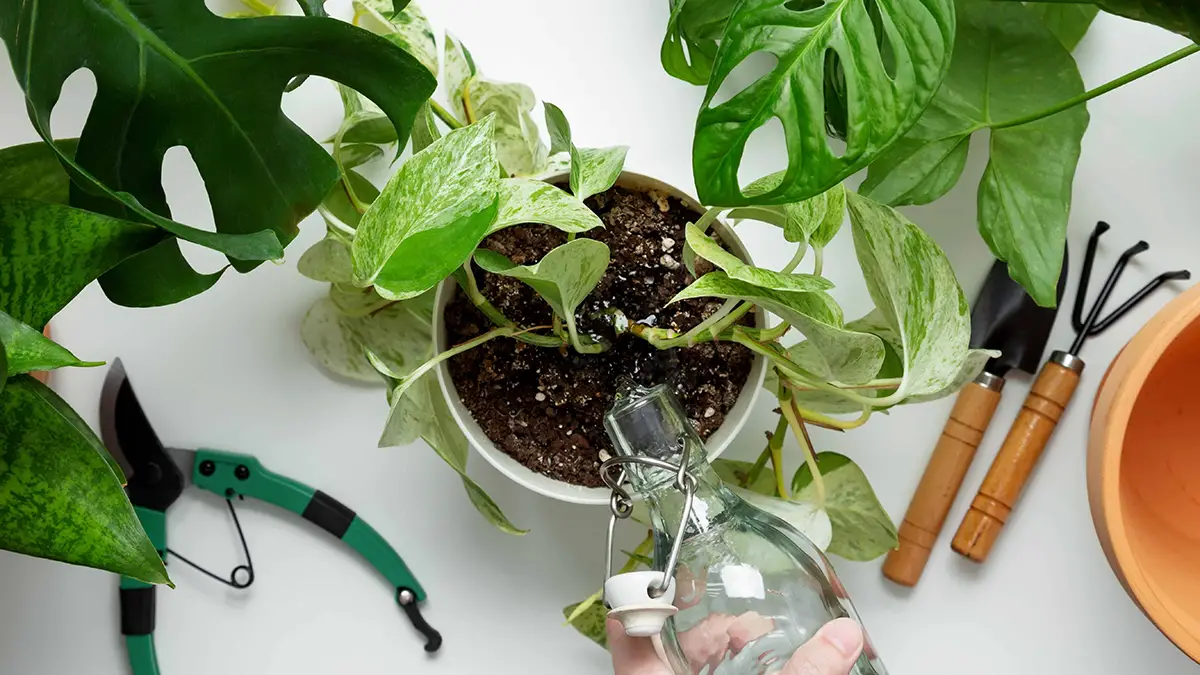
Growing pothos indoors requires an understanding of the different varietals and their unique watering needs.
Generally, you should water your pothos moderately from spring to fall, allowing the soil to dry slightly between waterings. Observe your plant to determine the best watering frequency. A droopy or yellowing pothos could indicate over or under-watering.
Golden Pothos (Epipremnum aureum) tends to have the most common watering needs among pothos varieties. It prefers a well-draining soil mix and does well when you water it once the top inch of soil feels dry to the touch.
Marble Queen Pothos (Epipremnum aureum ‘Marble Queen’) has watering requirements similar to those of Golden Pothos. Being a variegated plant, it may need slightly more light to maintain its distinct patterns, but the same general watering techniques apply.
Neon Pothos (Epipremnum aureum ‘Neon’) is another popular variety with bright, lime-green leaves. This varietal requires a watering schedule similar to the other two described, with the main difference being the color of the leaves. Keep an eye on the vibrancy of the leaf color as a sign of overall plant health.
